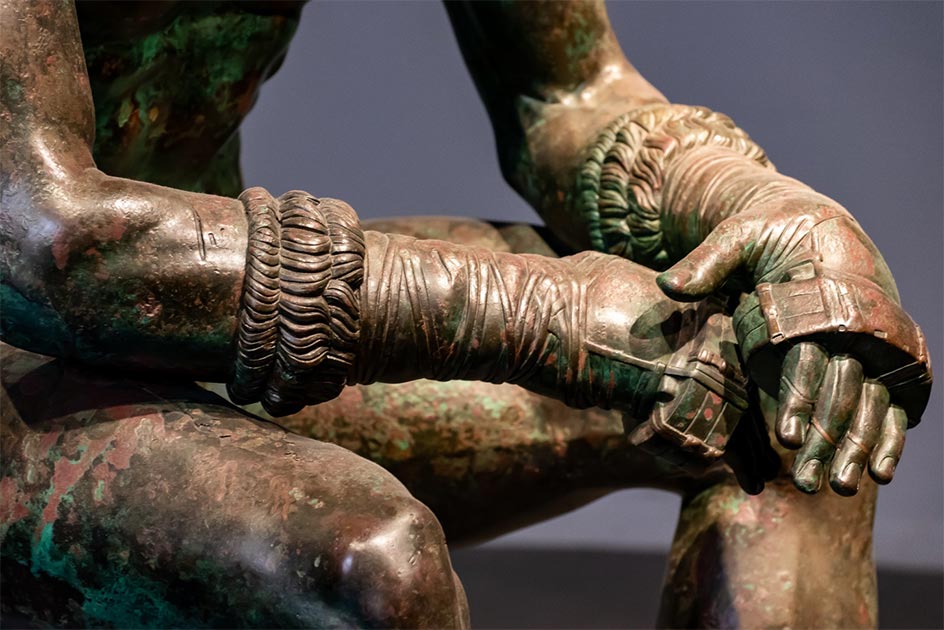They say boxing is an art form. And nowhere is this more apparent than in the bronze statue Boxer At Rest.
An exceptional bronze statue, depicting a seated fighter in repose, the piece was discovered by archaeologists in 19th century Rome.
No-one knows exactly when the Boxer was made. He is thought to date to between 323 BC – 31 BC approx – the Hellenistic period.
Naked as the day he was born, the bearded figure looks up and to the right. Not only are his hands clad in ancient padded boxing gloves – made of leather strips and knuckle rings – his private parts are similarly guarded. It’s believed the artist is presenting his subject post-bout.
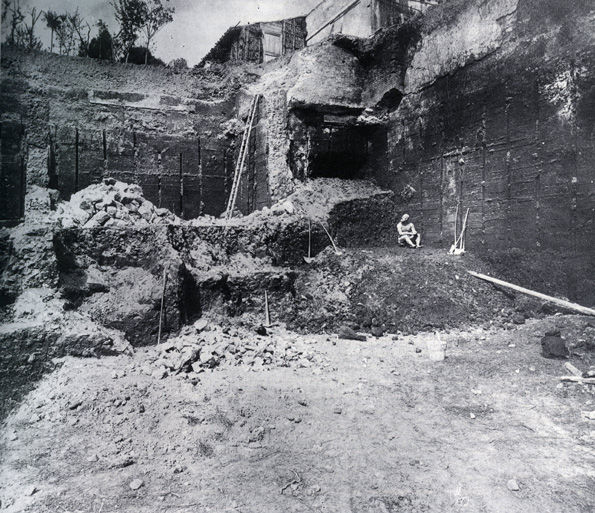
What is it about the figure that captures people’s imaginations? Arguably the most well-known quote concerning the bronzed bruiser comes from Rodolfo Lanciani. This lucky archaeologist was present during the Boxer’s excavation at the Quirinal Hill, 1885.
The Greek statue, hidden from prying eyes and light fingers beneath a building, made quite an impression. Writing in his 1888 book ‘Ancient Rome in Light of Recent Discoveries’, he called the Boxer a “magnificent specimen”.
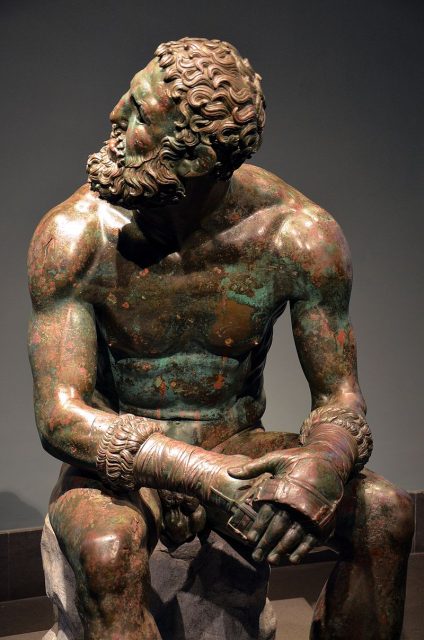
To him the piece looked like he was “coming slowly out of the ground, as if awakening from a long repose after his gallant fights.”
In 2013 the statue spent some time at the Metropolitan Museum of Art in New York. Excitedly describing the upcoming exhibit, curator Seán Hemingway talks about the Boxer like a living, breathing person. At one point he writes the sculpture “looks like he was just waiting to be found”.
If this sounds like worship, then it’s no surprise to learn the statue is seen as having god-like properties. The hands and feet show signs of being touched repeatedly.
Was the Boxer seen as a totemic touchstone? Might the fighter have also been a healer of some kind…?
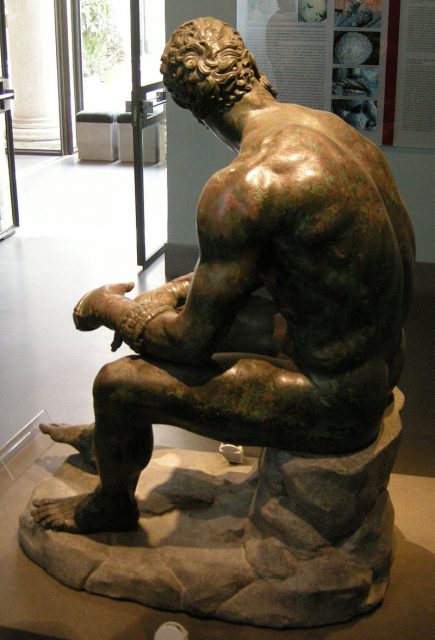
He may be stunning, yet this guy is no looker. Cuts and bruises, a crumpled nose and cauliflower ears show him as ready to rumble. This brutal realism was the style of the time.
Is the Boxer a specific individual, or is he intended to be a likeness of all such hardy athletes? As Ancient Origins notes, “Some of the realistic features found in Hellenistic art can be seen in more than one sculpture”. They add: “there may have been an artistic repertoire”.
He certainly isn’t the only punch drunk Adonis in town. Writing about a boxer’s head unearthed at Olympia, the Met says its “flattened nose, battered face and cauliflower ears make clear a veteran pugilist is represented”. Could the pugilist be mighty Greek hero and son of Zeus Heracles, who the Boxer at Rest appears to resemble?
One thing’s for certain, bronze is more durable than a man’s face. Working in this medium, Hellenistic artists could achieve powerful results. The Sculpture Park website says bronze artworks are “long lasting, difficult to damage, and don’t lose value.”
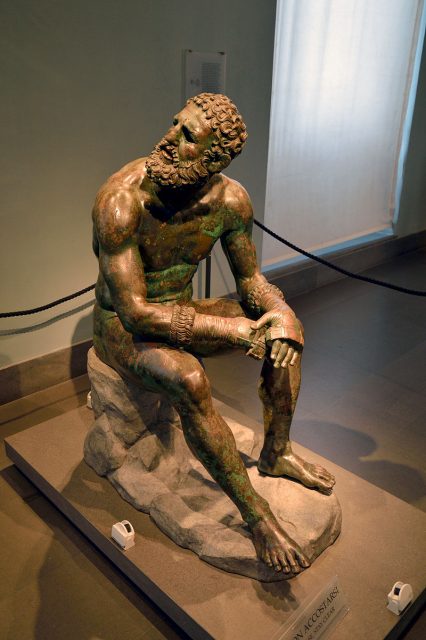
There’s something bronze isn’t prepared for however… extreme temperatures. Much of the metal was melted down to make weapons, so it’s even more remarkable that the Boxer lasted the distance. Whoever secreted him did the world a service. Ancient Origins notes there are only around 200 Hellenistic statues available to look at today. One of these was excavated not far from the famous knuckle-thrower.
He was created using the lost-wax casting process. This ancient technique has been recorded as early as 3700 BCE. How does it work? According to The Sculpture Park there are 12 steps overall.
Essentially the sculptor fashions their vision first, typically from something like clay. Then two moulds are taken from the piece, representing a left and right half. Wax is applied to the insides before the halves are stuck together. The wax figure is then ready to be coated in silica and stucco, ceramic ingredients.
Fired in a kiln, which melts away the wax inside (i.e. the “lost wax”), the new mould then receives a filling of liquid bronze before being removed to unveil the final product.
Another Article From Us: 1,000-Year-Old Cross Buried in Scotland Thought to Have Belonged to a King
No wonder the Boxer at Rest looks tough. He’d have to be to survive the intensive process! The iconic work is savage but scintillating, making him pretty unique in the annals of art history…
